
 |
Home | Gasherbrum IV References | Contact |
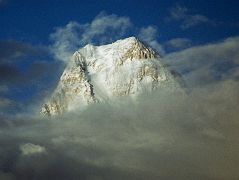
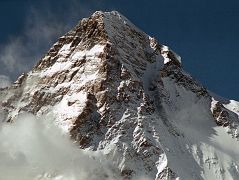
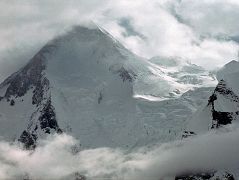
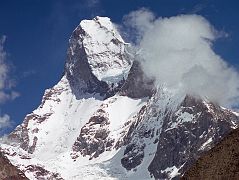
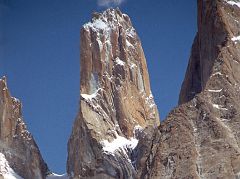
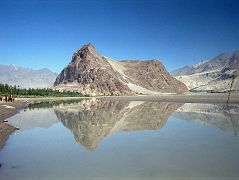
Links To Photo Galleries
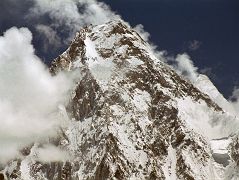
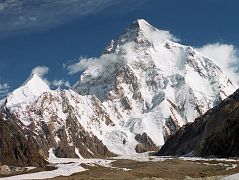
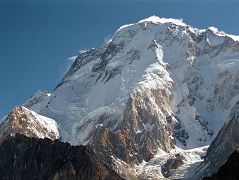
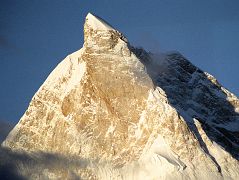
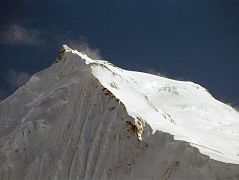
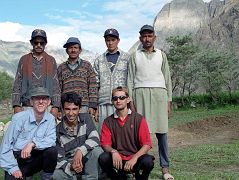
Updated: June 2011. Click on an image to see the FULL size with a caption.
To see the full list of photos, see K2 Photo Gallery.
Gasherbrum is a remote group of peaks located at the north-eastern end of the Baltoro Glacier in the Karakoram range of the Himalaya. The massif contains two of the world's 8000m peaks. In 1856, Thomas George Montgomerie, a British Royal Engineers lieutenant and a member of the Great Trigonometric Survey of India, sighted a group of high peaks in the Karakoram from more than 200 km away. He named five of these peaks K1, K2, K3, K4 and K5 where the K denotes Karakoram. Today, K1 is known as Masherbrum, K3 as Broad Peak, K4 as Gasherbrum IV and K5 as Gasherbrum I. Only K2, the second highest mountain in the world, has kept Montgomerie's name.
Gasherbrum is really a mutated word, transcribed from the Balti, whose name for the mountain, 'rgasha brum' means literally, 'beautiful mountain'. The modern 'Gasherbrum' was officially coined in 1860, when the British surveyor Montgomerie registered the name with the Grand Trigonometric Survey of India. When Sir William Martin Conway explored the Baltoro in 1892, he called the mountain’s west face 'The Shining Wall'. ... And right beside us, so close we feel we could touch it, stands the West Face of Gasherbrum IV, golden, steep, daunting. Seeing it awash with light, I understand why the old explorer, Conway, had called it 'The Shining Wall'.
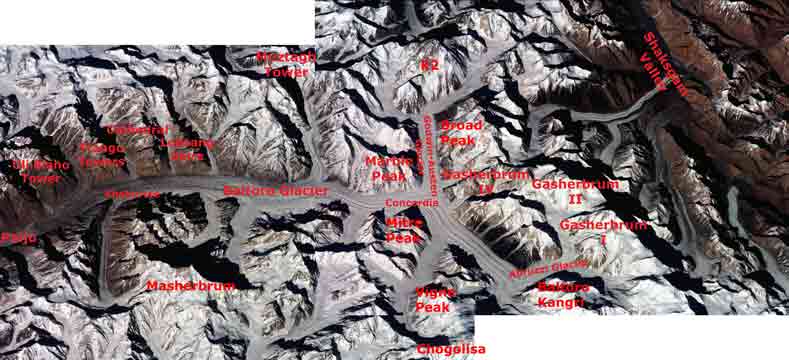
After flying from Islamabad to Skardu with an amazing view of Nanga Parbat, driving from Skardu to Thongol, and trekking from Thongol to Paiju, I set foot on the Baltoro Glacier. I trekked to Khoburtse that first day with a stunning view of Trango Nameless Tower and the Great Trango Tower. I had a dazzling sunrise from Khoburtse with views of Paiju Peak, Uli Biaho Tower, Trango Towers, Cathedral, and Lobsang Spire. The next trekking day we went from Khoburtse to Goro II where Masherbrum was striking both at sunset and sunrise while Gasherbrum IV loomed ahead with Gasherbrum II poking out to its right.
The next day was a fairly short trekking day passing Muztagh Tower before arriving at Concordia, the highlight of the whole trek with K2 dominating the view at the head of the Godwin-Austen Glacier. Rotating in a circle at Concordia, the view has K2, Broad Peak, Gasherbrum IV, Baltoro Kangri, Vigne Peak, Mitre Peak, Paiju Peak, the spires of the Baltoro Glacier, Crystal Peak and Marble Peak. WOW! Spectacular! Breathtaking!
The next day we trekked on the Upper Baltoro Glacier to Shaqring Camp with views of Chogolisa and Baltoro Kangri. Cloudy weather rolled in as we trekked on the Abruzzi Glacier to Gasherbrum Base Camp with a brief view of Gasherbrum I. After back-tracking to Concordia it snowed, so we decided to return back down the Baltoro Glacier instead of waiting for the weather to clear and the snow to melt.
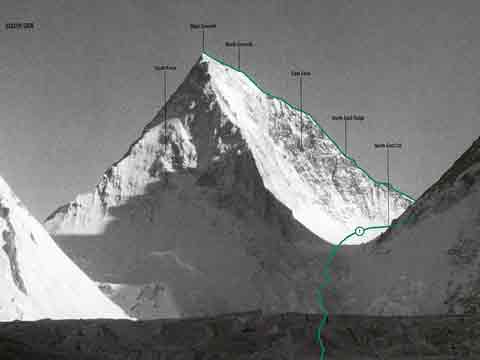
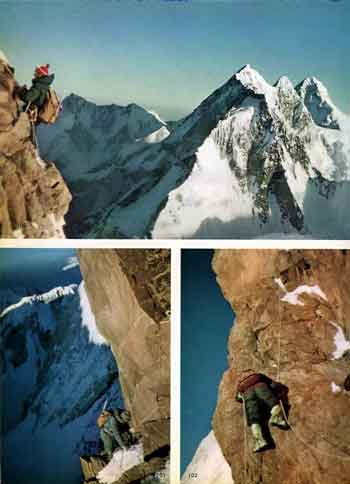
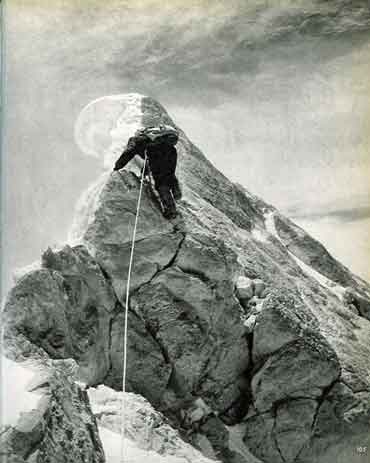
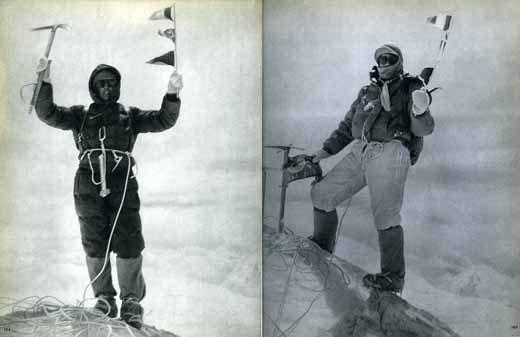
The first ascent of Gasherbrum IV was completed by an Italian expedition led by Riccardo Cassin with Walter Bonatti and Carlo Mauri reaching the summit on August 6, 1958 via the very difficult and dangerous northeast ridge.
Excerpts from Karakoram: The Ascent Of Gasherbrum IV by Fosco Maraini. They climbed the steep icefall, gaining the col between Gasherbrum III and IV and stared at the northeast ridge. "The North-East Ridge, on closer acquaintance, proved to be jagged with rocks, rose-red in the light of a setting sun, with fantastic cornices of snow and blue ice-cliffs."
Walter Bonatti and Carlo Mauri pushed out the route and tried to conquer the northeast ridge. "One highly difficult and dangerous pitch followed another, exhausting both the physical and nervous energies of the two leading men. ... endless series of knife-edge and rock-face, cliff and overhang" They realized they needed another camp on the ridge, but the rest of the team couldn’t keep the camps stocked quickly enough so they abandoned their summit bid and descended until the supply issues could be solved.
The team set up Camp 6, and Bonatti and Mauri retraced their steps and continued to tackle the northeast ridge. The summit day commentary is mainly by Walter Bonatti. "We were on the fore-summit at ten-thirty ... Nearer and nearer came the Summit, which outlines itself in the form of a wall rising steeply to five distinct points. ... A desperate struggle between the mountain and ourselves, but we were all winners, and at 12.30 exactly the little pennants of Italy, Pakistan and the C.A.I. fluttered on the Summit itself. Fluttered – no, blew out in the howling gale. 'In spirit, the whole Expedition was with us at that solemn moment of fulfillment. We embraced each other, deeply moved.'" They descended in a blizzard, with Giuseppi de Francesch almost falling to his death at 7200m.
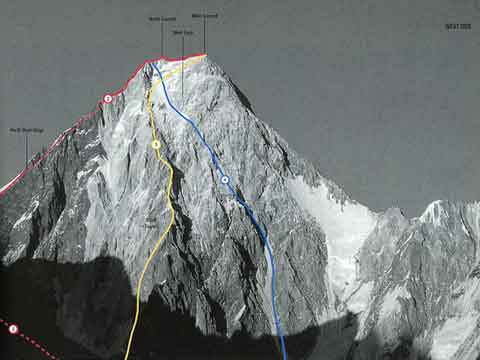
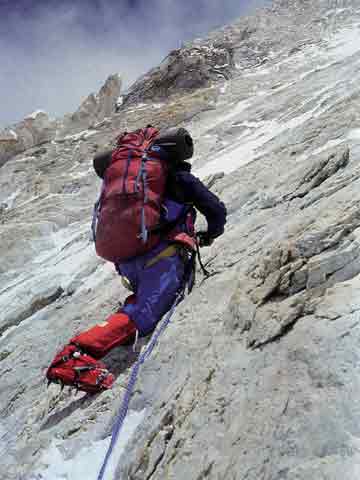
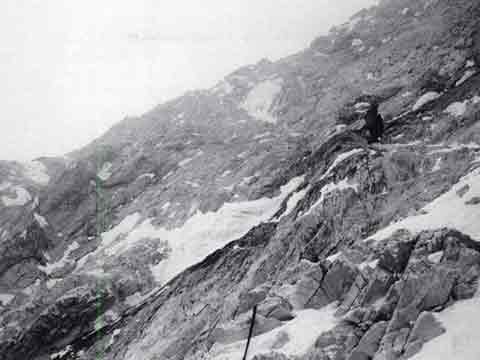
The 3000m high Gasherbrum IV West Face was climbed by Robert Schauer and Wojciech Kurtyka from July 13 to 20, 1985. After reaching the North Summit, bad weather and extreme exhaustion forced them to descend, missing the main summit. Their climb was selected by Climbing magazine as the greatest Himalayan climb of the 20th century. Robert Schauer in World Mountaineering:
Surviving on that face took every last ounce of our will and skill. The difficult first half took far longer than we expected, with the result that we ran out of food and fuel. Yet the summit looked within our grasp - until our plans were completely destroyed by the onset of a fierce storm. Already exhausted, we dug ourselves into a snow hole at 7700m - and remained pinned there for the next two days. We had scarcely eaten or drunk in 72 hours and, after such long deprivation, had become inured to the constant cold.
The cold was almost unbearable. When the sun reached the Wall, it took hours to penetrate our stiff bodies, while we struggled to escape the clutches of our dream world. ... Slowly our bodies began to move in the warming sun, almost like a reflex. It was clear to both of us that our only chance of salvation lay in continuing the climb. We would have to wade through thigh-deep snow towards the summit. Although less steep, we moved at a snail speed. At last, late in the afternoon, we reached the top of the face. A little nick in the ridge indicated a way to go down. We said nothing. Neither of us wanted to climb a few extra metres to the summit.
Intuitively, I nosed out the only way down across high rock steps and ice barriers. As if by magic, on a face so vertical and depressingly smooth, safe places appeared for us to stand on, and when it grew dark, we found a 'comfortable' spot to bivouac at 6500m. This was our tenth night on Gasherbrum IV. As our abseil descent became increasingly dangerous, still I believed nothing could harm us. After a whole day and night we reached the level surface of the glacier.
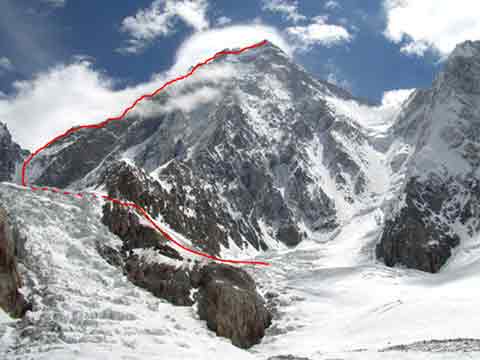
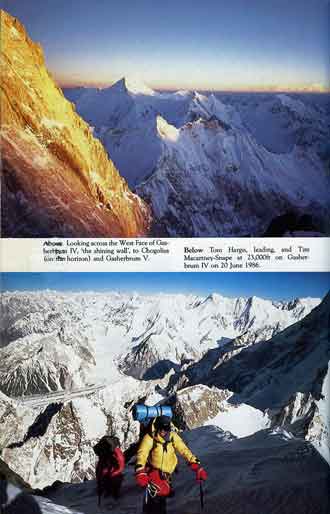
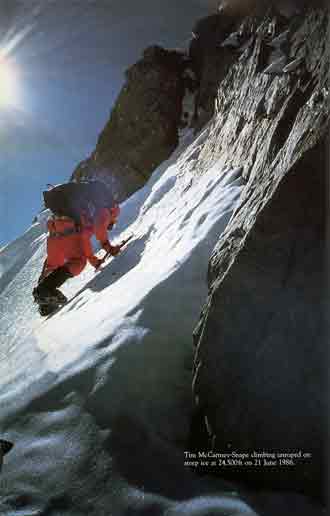
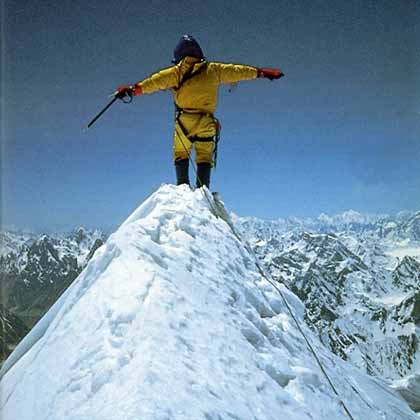
Greg Child, Tim Macartney-Snape, and Tom Hargis made the first ascent of the spectacular Northwest Ridge of Gasherbrum IV on June 22, 1986.
Excerpts from Thin Air: Encounters In The Himalaya by Greg Child. The story of Gasherbrum IV starts with getting permission from Pakistan and trekking to Base Camp with the usual porter problems. Child provides a good description of the Pakistan India conflict high in the mountains. The Gasherbrum IV Northwest ridge is "A 1,000 ft icefield capped by a steep 1,000 ft marble and limestone headwall. ... It would be a technical and serious climb right to the top." ... Yes, we all wanted the summit, but the physical and mental pain we had endured and would yet endure was so great that we had to force ourselves onto the mountain." After bivouacking in a snow cave at 7000m, they alternated leading pitches over difficult rock and bivouacked at 7350m.
They couldn't make it the summit the next day, so they dug another ice cave just below the North Summit at 7880m. "As we settle into the cave I feel like a stranded astronaut bedding down for the night on a hostile planet. But no, it’s our own wild and beautiful earth." On June 22, 1986 Greg Child, Tim Macartney-Snape, and Tom Hargis climbed to the North Summit and traversed 450m horizontally to the true Gasherbrum IV Summit, completing the first ascent of the Gasherbrum IV Northwest Ridge. "We functioned as a single being. Now on the summit, that being, drunk with euphoria, felt suddenly as if it had been merged with sky and mountain as well to become a single, elemental entity."
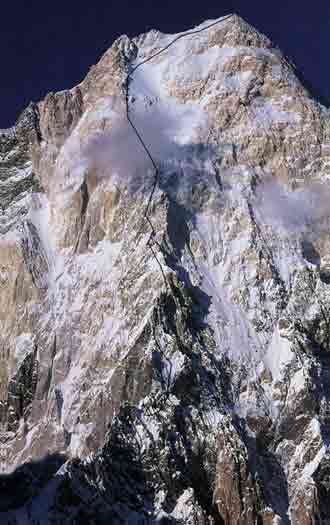
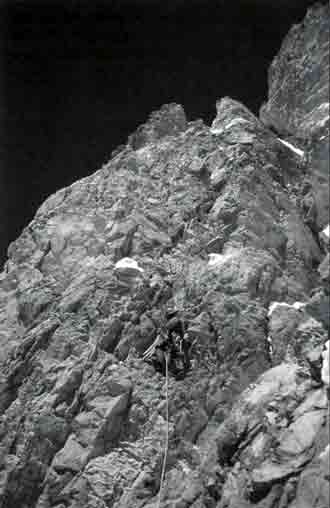
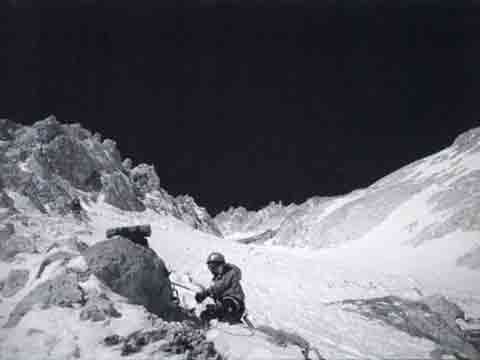
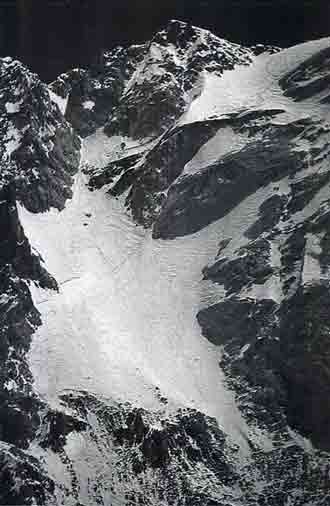
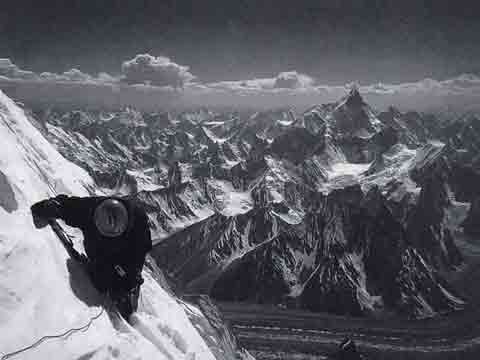
The first ascent of the Gasherbrum IV West Face Central Spur was completed by Koreans Bang Jung-ho, Kim Tong-kwan and Yoo Huk-jae on July 18, 1995. Jung Jae-Hag in the American Alpine Journal 1998:
The central rib of the west face previously had been attempted by at least six other parties; though none reached the top, seven alpinists were sacrificed to this deadly wall. ... The vertical distance from the snow plateau of Camp I [at 5400m] to the summit was about 2500m, with only two possible places to camp on the entire rib of the west face. ... We had to ascend about 600m on a 70 to 80m degree wall to reach the tiny narrow snow ridge suitable for Camp II. ... On July 12, Yoo Huk-Jae and Byung Ki Choi finally established Camp III at 6800m. ... We had been on the mountain for two months and the season was nearly over. The clock was ticking. We realized that we had only one chance to push to the summit. ... We planned three days to the summit and one day to get back to CIII, which meant three bivouacs.
July 18. The summit day had come. It was a perfect day. ... After climbing 300m on the 70 degree snow-covered wall, we approached a place called 'The Devils' Brow.' Jung-ho took over the lead and advanced another 80m on the icy surface.' ... We could barely proceed up the 60 degree slope of ice and snow with our beaten bodies. ... After advancing 100m, we finally reached the summit ridge. The time was 12:26 p.m.. To the east, a wall formed a perpendicular drop downward; snow covered its top along the summit ridge. We crossed a distance of about 100m along the ridge toward a pinnacle in the south that was tallest on the crest. Hak-Jae ... noticed that six small pinnacles stuck out on the summit ridge of GIV. All of them appeared to be less than 10m high. He easily distinguished the third one as the highest. ...Dong-Kwan arrived at the third pinnacle after traversing 30m along the snow wall right below the ridge. He placed a knife blade and bong-bong and used them to belay the others. At 2:27, they joined him at the belay. Above us, there was a 3m high smooth rock covered by a 2m snow cornice. Hak-Jae realized that we could it [sic] if we demolished the cornice before stepping on it, but it seemed too vulnerable to tackle. The danger of its collapse made the last few metres of climbing meaningless. As sub-leader of the team, he decided that was far as we would go. We took a few pictures and started descending right away. .. In the process of retreating, the CII cornice collapsed. Gung-Yeal was caught by a thin rope; unfortunately, he lost his backpack that contained ten rolls of film, including then summit pictures. After midnight, all members returned to BC.